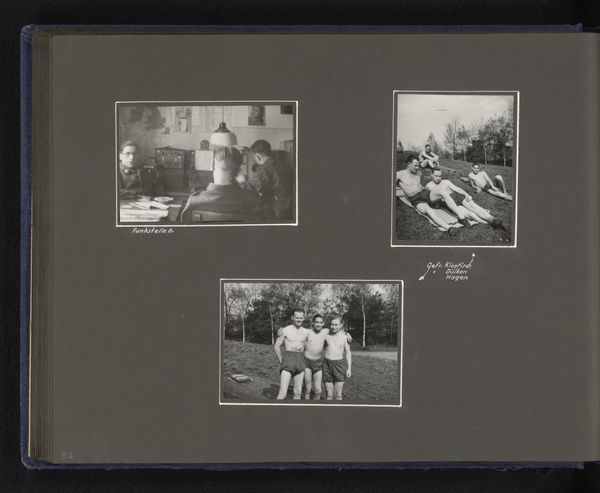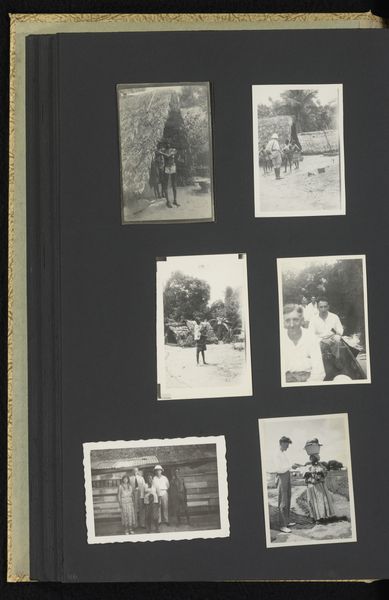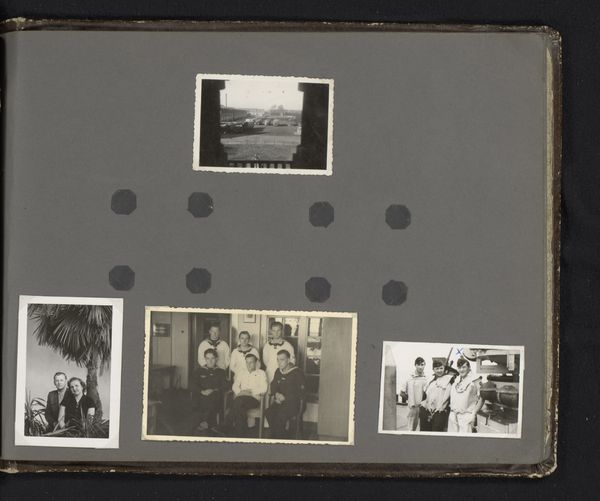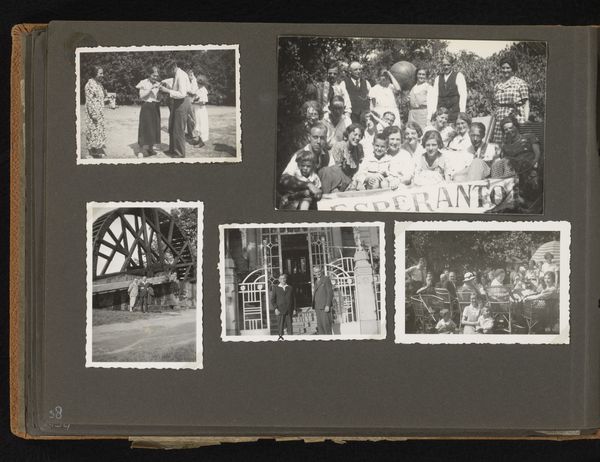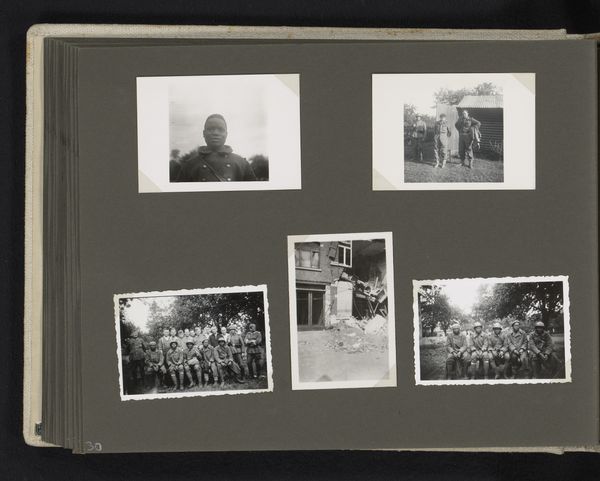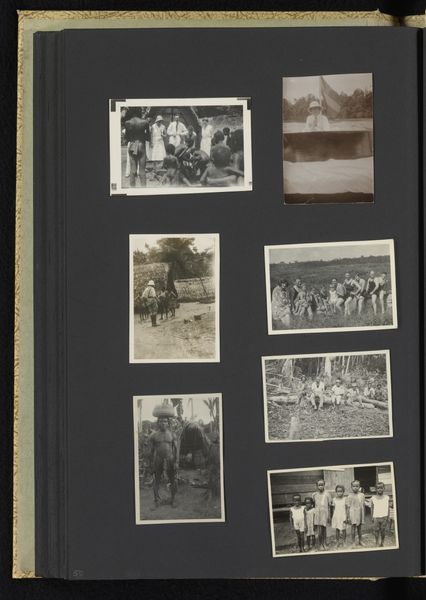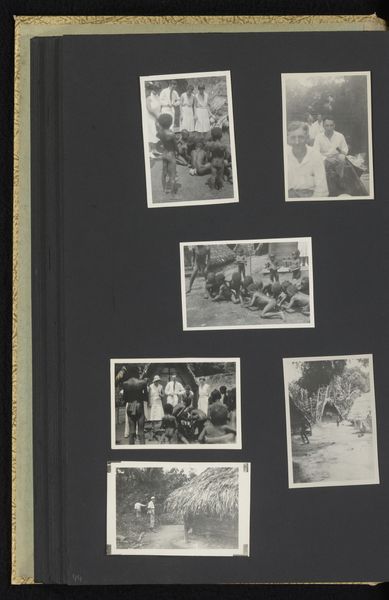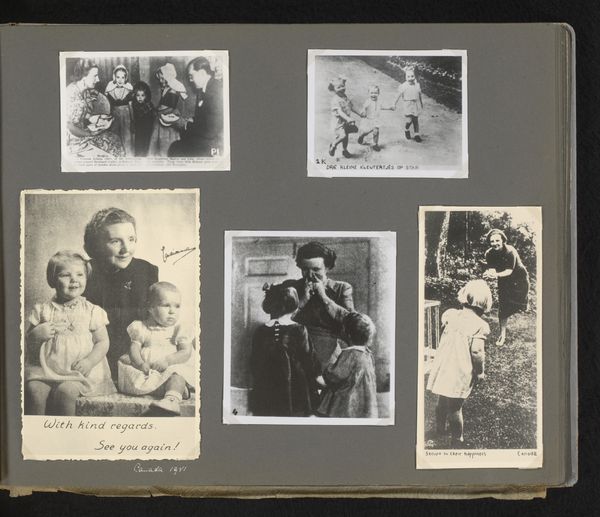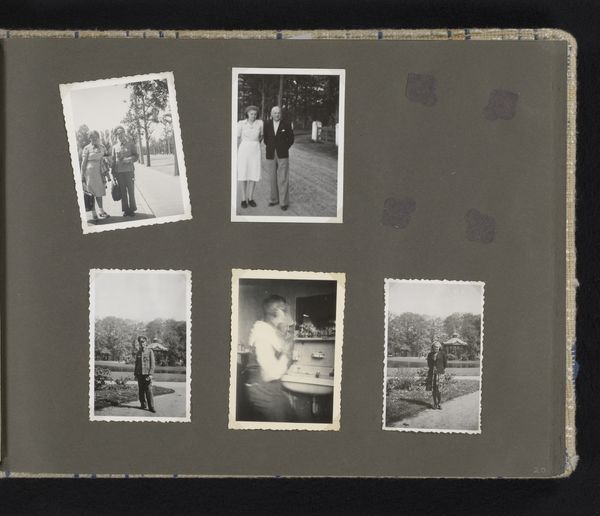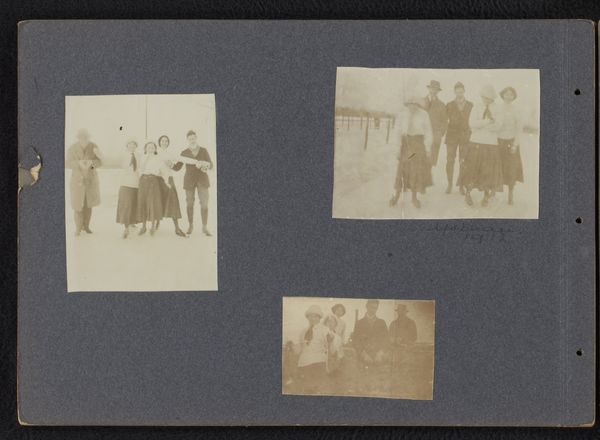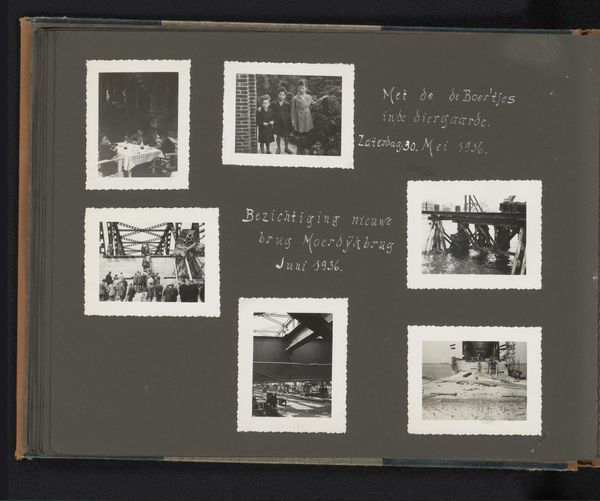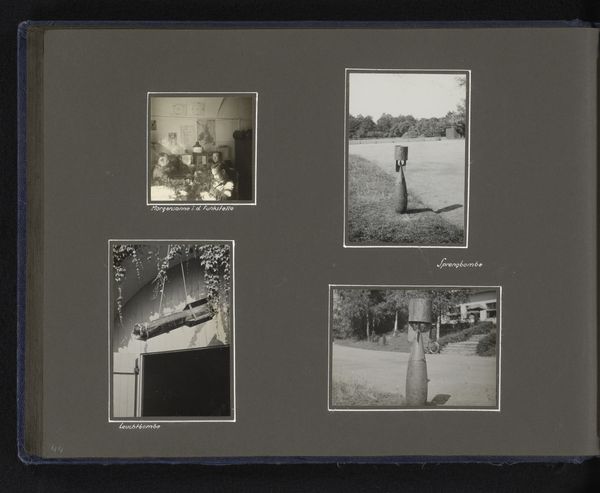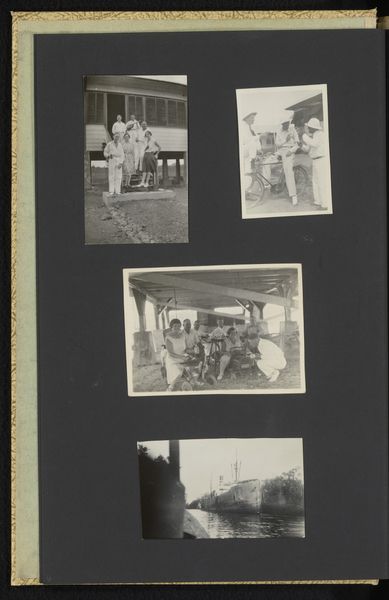
photography, gelatin-silver-print
#
portrait
#
sculpture
#
photography
#
group-portraits
#
gelatin-silver-print
#
realism
Dimensions: height 60 mm, width 90 mm, height 220 mm, width 290 mm
Copyright: Rijks Museum: Open Domain
Curator: Let's have a look at this curious photo album spread called "Zonnebaden," or "Sunbathing," dating back to 1940. It is held in the collection of the Rijksmuseum. My immediate feeling is that it feels like a collage, or some forgotten evidence of a very ordinary past. Editor: My eye immediately goes to the composition—the contrast of light and shadow in these small photographs and how they are carefully mounted within a larger dark ground of the album page, turning an everyday snapshot into a miniature gallery, perhaps? It's intriguing in its craft! Curator: You make a good point, how are we to read such work with what we know of the context of 1940s Europe? These seemingly mundane photographs suddenly seem…charged, burdened by an ominous future. Even the seemingly simple act of sunbathing becomes tinged with something unsettling. Editor: Exactly, let’s talk materials! The gelatin silver print, a popular process for its time, feels significant here. Photography becoming the everyman's means of documentation— democratizing image creation, which shifts who gets to record history and the images selected for future generations to examine. I’d love to know if the paper quality indicates mass production. It would change my perspective if this was, indeed, one of many copies. Curator: Mass production alongside individual narrative and choice, I feel it. It reminds me how the power of art sometimes resides in what the artist omits rather than reveals. Editor: It does push me to ask myself: what labor was involved in producing and collecting images and compiling the album? What was consumed to get here, and discarded to obtain the final form? What did each photographic emulsion cost to manufacture? Curator: Thinking about the unseen aspects reminds me about how the photograph really isn’t just what you see—there are emotions caught between then and now, and sometimes, they reverberate even in mundane depictions. Editor: Very well said, indeed. It shifts the piece into thinking of production rather than, and together with, feeling. So thank you for that point. Curator: My pleasure! What an unusual treasure for us to encounter and question together, in that sense!
Comments
No comments
Be the first to comment and join the conversation on the ultimate creative platform.
